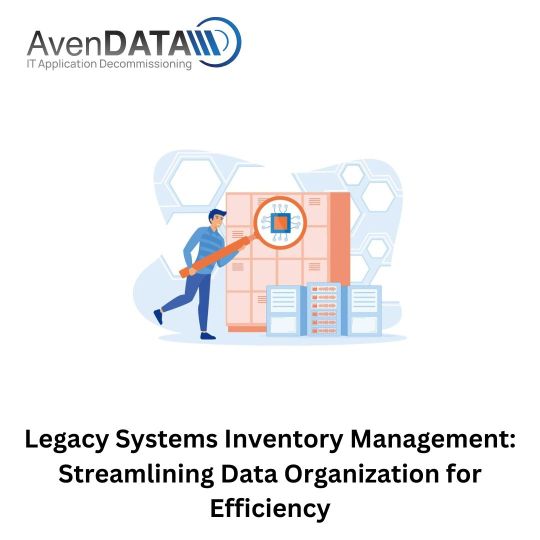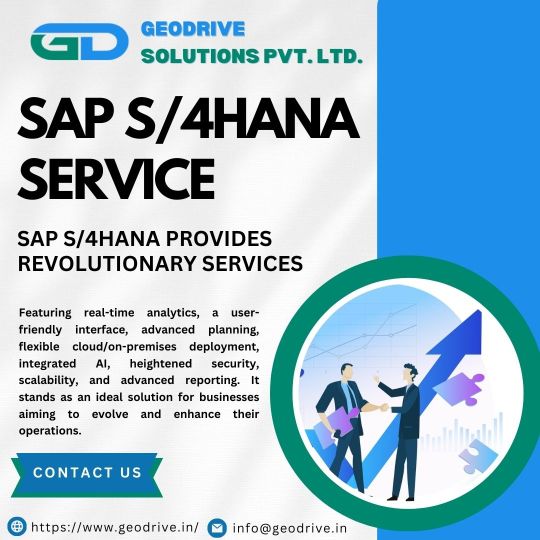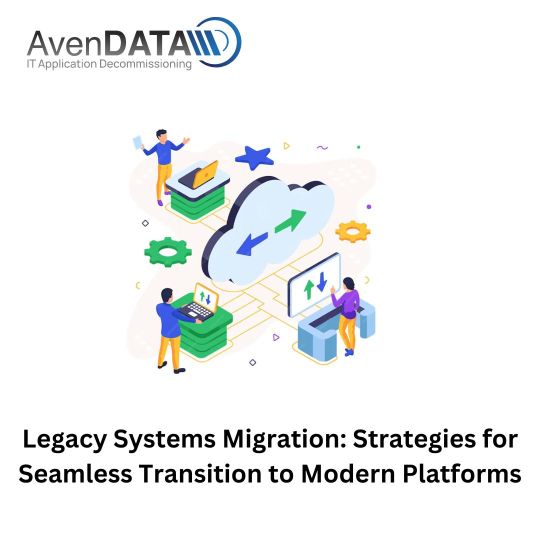#sap system
Text
Legacy Systems Inventory Management: Streamlining Data Organization for Efficiency

Introduction
In the realm of archive management, one of the most crucial tasks is effectively managing the inventory of legacy systems data. With the accumulation of historical data over years or even decades, organizations often find themselves grappling with the challenge of cataloging and organizing vast amounts of information stored within legacy systems. "Legacy Systems Inventory Management" represents a strategic approach to streamline data organization, ensuring efficiency, accessibility, and compliance in archive management.
The Challenge of Legacy Data Overload
Legacy systems often contain a plethora of data accumulated over the course of their operation. This data may include historical transaction records, customer information, financial data, and more. However, without proper inventory management strategies in place, organizations risk drowning in a sea of unorganized and unstructured data. The challenge lies in cataloging and organizing this data in a way that facilitates easy retrieval, analysis, and compliance with regulatory requirements.
Adopting a Systematic Approach to Inventory Management
To effectively manage the inventory of legacy systems data, organizations must adopt a systematic approach that encompasses both technology and processes. This begins with conducting a comprehensive inventory audit to identify all legacy systems and the data they contain. Once the inventory is established, organizations can then implement robust cataloging and tagging mechanisms to categorize and organize data based on relevance, sensitivity, and other criteria. This systematic approach not only enhances data organization but also facilitates efficient retrieval and compliance with regulatory requirements.
Leveraging Automation and Technology Solutions
In the digital age, organizations have access to a wide range of automation and technology solutions that can streamline inventory management processes. Automated inventory management tools can scan legacy systems, identify data assets, and generate detailed inventory reports automatically. Additionally, organizations can leverage metadata management solutions to enrich data with descriptive tags and attributes, making it easier to search, filter, and retrieve information. By harnessing the power of automation and technology, organizations can significantly reduce the manual effort required for inventory management while improving accuracy and efficiency.
Implementing Governance and Compliance Measures
Effective inventory management goes hand in hand with governance and compliance measures to ensure the integrity, security, and privacy of legacy systems data. Organizations must establish policies and procedures for data access, storage, retention, and disposal, aligning with regulatory requirements and industry best practices. Additionally, regular audits and reviews of inventory data are essential to identify any discrepancies or vulnerabilities and address them promptly. By implementing robust governance and compliance measures, organizations can mitigate risks and ensure the integrity and security of their legacy systems inventory.
Conclusion: Optimizing Efficiency and Compliance in Archive Management
In conclusion, legacy systems inventory management is a critical component of archive management, ensuring efficiency, accessibility, and compliance with regulatory requirements. By adopting a systematic approach, leveraging automation and technology solutions, and implementing governance and compliance measures, organizations can streamline data organization processes, enhance data integrity and security, and unlock the full potential of their legacy systems data. In doing so, they pave the way for more efficient and effective archive management practices, enabling them to derive maximum value from their historical data assets.
#carve-out#it application decommissioning#mergers and acquisitions#system decommissioning#sap system#insolvency#legacy system#liquidation
0 notes
Text
Unlocking Business Value: Integrating SAP S/4HANA into System Decommissioning Strategies

As organizations embrace digital transformation, the integration of cutting-edge solutions like SAP S/4HANA into their IT landscapes becomes a strategic imperative. This is particularly evident in the context of system decommissioning, where retiring legacy systems paves the way for modernization. In this blog, we explore how the integration of SAP S/4HANA enhances system decommissioning strategies, unlocking substantial business value and fostering a more agile and efficient operational environment.
Embracing the Potential of SAP S/4HANA
1. Unified Data Platform:
SAP S/4HANA provides a unified data platform that integrates transactional and analytical data in real-time. Leveraging this unified platform during system decommissioning ensures a seamless flow of information, reducing data silos and enhancing overall data visibility.
2. Advanced Analytics and Reporting:
The advanced analytics capabilities of SAP S/4HANA empower organizations to derive meaningful insights from their data. Integrating these capabilities into system decommissioning allows for in-depth analysis of historical data, aiding decision-making processes and strategic planning.
3. Improved Process Efficiency:
SAP S/4HANA is designed to streamline business processes, offering a simplified data model and optimized workflows. Integrating this efficiency into the decommissioning process ensures that operations remain smooth and agile, minimizing disruptions during the transition.
4. Enhanced User Experience:
The modern user interface of SAP S/4HANA contributes to an improved user experience. Integrating this user-centric approach into system decommissioning promotes user adoption, reduces training overhead, and facilitates a seamless transition to the new environment.
System Decommissioning Strategies Enhanced by SAP S/4HANA
1. Data Migration Excellence:
SAP S/4HANA’s robust data migration tools enhance the efficiency and accuracy of data transfer during system decommissioning. The platform’s in-built capabilities for data cleansing, mapping, and validation contribute to a smoother migration process.
2. Real-time Data Integration:
Integrating SAP S/4HANA ensures real-time data integration with other SAP modules and external systems. This real-time connectivity minimizes latency in data transfer during decommissioning, supporting timely decision-making and operational continuity.
3. Seamless Application Retirement:
With SAP S/4HANA as the destination platform, organizations can seamlessly retire legacy applications. The integration process includes comprehensive mapping of functionalities, ensuring that critical business processes are smoothly transitioned to the new environment.
4. Strategic Data Archiving:
SAP S/4HANA’s archiving functionalities provide a strategic approach to managing historical data during system decommissioning. This ensures compliance with regulatory requirements while optimizing storage resources and maintaining data accessibility.
Maximizing Business Value through Integration
The integration of SAP S/4HANA into system decommissioning strategies is a forward-looking approach that extends beyond the retirement of legacy systems. It lays the foundation for a digital future, unlocking significant business value:
- Operational Agility:
SAP S/4HANA’s streamlined processes contribute to operational agility, allowing organizations to respond rapidly to changing business dynamics and stay ahead of the competition.
- Innovation Enablement:
By integrating SAP S/4HANA, organizations empower themselves to embrace future innovations seamlessly. The platform’s adaptability positions businesses to leverage emerging technologies and stay at the forefront of industry trends.
- Cost Optimization:
Efficient processes, enhanced data management, and improved user experiences result in cost optimization. The integration of SAP S/4HANA aligns with long-term cost reduction strategies.
- Competitive Advantage:
Businesses gain a competitive advantage by aligning their system decommissioning strategies with the capabilities of SAP S/4HANA. This not only enhances current operations but also positions organizations for sustained success.
Conclusion
The integration of SAP S/4HANA into system decommissioning strategies is a transformative journey toward enhanced operational efficiency, data management, and overall business value. By unlocking the full potential of SAP S/4HANA, organizations can embark on a path of continuous innovation, ensuring they remain agile and competitive in an ever-evolving business landscape.
1 note
·
View note
Text
What are the advantages of opting for SAP S/4HANA Services?

Geodrive stands at the forefront of innovation with dedicated teams specializing in various critical aspects of business technology, including product development, SAP S/4HANA setup, migration, and delivery. Our commitment to excellence is evident in our comprehensive approach to SAP S/4HANA services, offering tailored solutions for businesses seeking to optimize their operations. One of Geodrive's key strengths lies in its ability to adapt to diverse technological landscapes. Whether leveraging on-premise infrastructure, tapping into the potential of public or private clouds, or embracing a hybrid system. Geodrive is well-equipped to deliver SAP S/4HANA services tailored to the unique needs of each client. This flexibility ensures that businesses can choose the deployment model that aligns seamlessly with their existing infrastructure and future growth plans. At the heart of Geodrive's service excellence is our commitment to a seamless transition to SAP S/4HANA. We understand that the adoption of a new enterprise resource planning (ERP) system is a significant undertaking, and to address this, we employ a design thinking methodology. This human-centric approach allows us to deeply understand the specific requirements and challenges of each client. By integrating design thinking into our processes, we ensure that the implementation of SAP S/4HANA is not just a technical upgrade but a holistic transformation that aligns with the unique goals and culture of the organization. Geodrive's teams bring a wealth of industry expertise to every project. Our professionals are not only well-versed in the technical intricacies of SAP S/4HANA but also possess a deep understanding of industry-specific challenges and opportunities. This ensures that our clients receive not only a technically sound implementation but also a solution that is finely tuned to their business objectives. In summary, Geodrive is a trusted partner for businesses embarking on the journey of SAP S/4HANA adoption. Our specialized teams, flexible deployment options, design thinking methodology, and industry expertise collectively contribute to a transformative experience, enabling businesses to unlock the full potential of SAP S/4HANA for sustained growth and success.
1 note
·
View note
Text
making it through july: l. hughes
blurb: moments in june, falling in love and getting put back together by luke. / word count: 2.2k / pairing: luke hughes x fem!reader / tw: mentions of anxiety and panic attacks; general anxiety about getting older and change. part two to "moments in june"
“The movie is my mind is blue — / As June runs into warm July / I think of little else but you.” (Wendy Cope, From June to December.)
When the heat of June melted into the sticky sensation of July, the summer felt almost claustrophobic; the feeling of freedom you had tried to play off as being permanent, while the remainder of the month looming took center stage: a rush of anxiety, of worry, and of anger at the closing of summer.
Now, as you stood at the kitchen island inside the lake house, Luke draped over the sofa with the fan pointed directly at him, you could see the toll the summer had taken on your boy, as well. The once pale skin he wore now a tan, the beauty marks dusted on his cheeks and neck now surrounded by smatterings of freckles — reminders of the kisses you had once laid on that same expanse of skin.
Despite how much you hated to admit it — how much you hated to let the overwhelming feeling of wrongness take over your senses, you knew it was time; time for a conversation between the two of you of what July really meant. For you, July was a marker of anxiety; of homesickness for the boy who was merely six feet away from you, burdened by the same fear you were overcome with during the semester, when the nights of studying, of feeling overwhelmed and as if you would never finished, felt like they’d never truly stop.
It was those nights that spiked the feeling of missing this version of Luke: of missing the way he’d grab your hand, entwining your fingers even if he didn’t mean it. Of the soft touch he’d leave at the back of your neck, his fingers ghosting over the trails of kisses he’d leave when no one else saw him, where the only salvation he ever claimed to know was the taste of your skin. Now, the only taste you could sense was the taste of disappointment; an ash-like memory of the anxiety of being away — a fear that you could feel weeks before you even had to leave. In a way, it was your body preparing you for the pain — the rush of discomfort, of lonely and cold nights, and of resentment in a way.
Now, though, as you walked towards Luke’s lounging form, the boy looked up — opening his eyes and meeting yours as you laid the glass of water and plate of snacks on the coffee table in front of him, and as he sat up to make space for you on the couch — scooting his body away to let you soak up both the warmth of his own body, and the fresh air blowing straight at the both of you. He smiled softly, his curls sleep-addled and his muscles relaxed. In a way, for every single one of your worries, Luke combatted it with his own ability to remain calm — to soak up the same sun you stood by worrying would be gone much too soon.
“Luke?” you asked quietly. He only cocked his head a bit — already being able to mark the tension your body held, and that you carried. As you sat next to him, he stopped you before you could fully reach the couch — instead, stretching out his own legs to they stretched the length of the couch, and where he maneuvered you to sit between his legs — pulling your back to his chest, and working his way fro your hands, to your forearms, to your shoulders with his hands, dragging the tips of his fingers, calloused and scarred from his job, to trail up your body.
“I know what you’re going to say,” he began, his voice cutting through your own stupor. Could he, though? Was he really able to tell that you felt like you were ripping at the seams, so caught up in your own fear of change? Of losing the moments you held on to so dearly?
Almost as if he could sense your thoughts, he nodded, despite the fact that you couldn’t see him. “Yes, I’ve seen it, baby. The way you’ve decided you aren’t allowed to enjoy the rest of our time here because of the fear of what comes after this. Of what comes after June and July and August,” he said quietly. How was it that this boy could read you so well? How could he so easily peel apart the layers of yourself you had tried so hard to keep together?
You could only nod, laying as close to him as you could, and not trying to quell the tears that dripped out. You couldn’t keep pretending like it was fine — like the toll your body was working with was okay anymore. Instead, you let Luke speak — let him drag your hair away from your face, running his fingers through the strands.
“Look, pretty girl, this is what’s going to happen — and before you say anything, before you let the fear overtake every single thought in that pretty little head of yours, I need you to listen to me first, okay?” he asked. “When July is over, we have until August — until you’re so sick of me. When we leave, when I go back to Newark and you go back to Michigian, we’re going to be okay,” he continued.
“We’re going to make it through the summer, and then we’re going to make it through fall and winter, and then spring again. You’re going to go back to school and work your ass off, but you’re going to set boundaries for yourself, we both are, because baby, I refuse to let you worry about this again. Y/N, I love you — since you laughed at my stupid jokes, and since you made my entire family love you, I knew you were mine, and I never want you to doubt that. But, when July ends, I want you to go back knowing that I am always going to be here. Me loving you doesn’t just stop because July comes around,” he finished.
He wrapped his arms around your chest, enveloping your arms in his — he was right. Just because June had bled into July, just because your worry had transformed into a more immediate thing, did not mean that Luke was going to simply disappear; Luke, for all of your worries or your anxieties, was not the summer. He wasn’t simply a month that would come and go every year, but the man who had loved you since he saw you — the man who would put himself and his needs just to take care of you and yours first — something he had proved time and time again. The truth was that Luke was the boy you wanted to spend your Junes and Julys with, who you wanted to watch the summer bleed into the fall with, and who you wanted to continue loving; just because July was here didn’t mean the love between the two of you was as fluttering.
For so long you had forced yourself to see the changing of months as markers for your relationships — for how those around you would treat you; how they would make your time feel almost limited when the summer was over, but with Luke, that changed. With Luke, whether it was June or July, you’d be loved.
“It’s July and I have hope in who I am becoming.” (Charlotte Eriksson, Everything Changed When I Forgave Myself.)
For all of his quirks — his inability to cook, his bad habit of always leaving his dirty shirts on the rim of the hamper instead of inside, or always leaving his keys everywhere, Luke was truly the partner of your dreams — so you tried your best to ensure that you were just as supportive and assuring as he was when he needed the opportunity to breath — to calm the raging storm that you knew was constant in his head. Luke was always there for you — always a sure hand, always a solid companion, and the one individual who knew what you needed the moment you asked.
Knowing this, you still felt your heart clench the moment you felt Luke creep out of your shared bed close to 3AM — unlatching himself from where his arms were encasing you, and where you heard his footsteps retreating from the bedroom, and dwindling down the stairs — hearing the give of the wood under his own large frame as he tried his best to be quiet, and not wake his sleeping brothers.
You did your best to give him some space; despite the fact that you needed to be encased in comfort when you were anxious, Luke wasn’t like that — he needed space, and then he wanted to comfort — needing the reminder that he was solid, and that you were unmoving as well. Turning into the warmth that he left on his side of the bed, you counted from one to sixty ten times; giving him, at the very least, ten minutes to take what he needed before you helped him, as well.
Once you finished counting, you sprang out of bed, sleep be damned. Your boy needed you, and you wouldn’t disappoint him.
Making your way down the stairs — making sure to skip the bottom step so it wouldn’t creak, you walked out to the porch, where you could see Luke’s frame illuminated by the porch lights, small patio lights the two of you had put up at the beginning of the summer. You could see the wide expanse of his back — toned and fit from all of his hours training, almost caving in on himself. Luke, for all his glory, was as anxious as you were, but instead of isolation, he tried to make himself smaller — to fit into the rle he had played for so long as the youngest child.
As you walked outside, you could hear his silent sobs; the shaking of his shoulders a dead giveaway. As you joined him, sitting next to him on the porch, you reached out and put a hand on his shoulder — shaking him up a bit, but ultimately feeling as he turned directly into you, and simply hugged you — enveloping the entirety of your body and dragging you up to your tip-toes as he hugged you, and as he sobbed into your shoulder.
To offer him some sort of reprieve, you rubbed his back slowly — giving him the ability to take the time to let it all out, because as much as Luke knew you, you also knew him — and you knew he had been keeping this in for a while.
“It’s okay, baby. You’re okay, sweet boy,” you whispered, now running your hands through his hair. “Whatever it is, your brain is playing mean tricks on you. You’re so worthy, and smart, and I am so endlessly proud of you, hmm?” you said, trying to offer as much comfort to the boy as possible.
As Luke’s cries subsided, he brought his face away from your shoulder quickly, and, through a tear-stricken voice, explained the toll that the months had on him, too. “It’s just — I see the toll that this takes on you; that I take on you, and I don’t want to keep hurting you, baby. I can’t keep hurting you,” he whispered, and at that moment, if you hadn’t been outside and the lake hadn’t been less than a hundred yards away, you would've thought you could hear the distinct sound of your own heart breaking into a million tiny pieces; fragments that Luke himself had put together, but that broke again hearing his say that.
Yes, you were anxious, and it did tend to take a toll on you, but it wasn’t his fault — and neither was it something he could fix. You were so proud of Luke — of the fact that he was out there, chasing his dreams and making his own name because of his talent and skill. Did you miss him? Absolutely, but you didn’t want to be the reason he gave up his dreams — the reason he hated doing what he loved.
“Luke, look at me, please,” you pleaded quietly, holding his face and cupping the right side of his face. “None of this is your fault, do you understand me? You have done nothing wrong but wait all summer for me to be myself, and because of you, I have. I’ve had the best weeks of my life here, with you, and I don’t give a fuck if its June or July or fucking December, because you taught me now to,” you started.
“Luke Warren Hughes, I don’t care if it’s the middle of July or it’s January, you are mine, you hear me? You aren’t hurting me or causing me any pain; in fact, it’s the exact opposite — you’ve been the only reason I’ve smiled in so long, and I love you for that,” you whispered, still holding on to him, nodding and making sure he copied your actions — you’d drill this into his head even if it gave you vertigo.
Luke could only look up at you — his face tear-stricken, his curls plastered to his head, and the echoes of pain in his eyes. He nodded, looking at you, before once again bringing you into a hug. You loved him, and fuck if it was July or August; the summer wouldn’t be a deadline or a reminder, but just a change of page. Because, right now, despite being the beginning of July, you still felt like you’d been in love with him for much more than a summer.
#luke hughes#luke hughes imagine#luke hughes x reader#new jersey devils#nhl imagine#nj devils#hughes brothers#nhl blurb#luke hughes is a sap#making it through july — moments in june#anxiety is okay!!!#please make sure you have a support system i love you
188 notes
·
View notes
Text
headcanon that koko falls for you in one night because despite the six figures synonymously associated with his name, you insist on buying him a drink – not the other, “traditional” way around.
and instantly he’s a pile of mush, embarrassingly losing all that silver-tongued charm because you keep fucking grinning at him like an idiot and his eyes are just glued to you like a magnet – a creepy magnet, his thoughts supply, extremely unhelpfully – unable to physically tear his gaze from your stupidly beautiful face. he can’t remember the last time he’s been spoiled like this, if something small (and very, very thoughtful, he thinks<3) such as this even counts, but the night has gotten ten thousand times better since you offered to buy him a drink (he has more money than he knows what to do with, for god’s sake) but he feels all tingly about it, which is amplified further because you’re like ridiculously pretty and not to brag but he’s not so bad himself so maybe this could even lead somewhere and oh my god your card’s been declined you’re broke as fuck holy shit he’s laughing so hard his belly genuinely hurts—
#i have no self control i WILL elaborate on this later !!! that’s a threat !!#the koko thoughts have been thunk but more shall consume me until i write it out of my system#i love him so much he’s a SAP#—tr.thoughts!#koko x reader#kokonoi x reader#kokonoi hajime x reader#tokyo revengers x reader#tokyo rev x reader#tokyo rev drabbles
259 notes
·
View notes
Photo





Mae Martin
SAP (2023)
#my first email address was an accidental american pie reference and this was very unfortunate#mae martin on the other hand was a genius#and still is#mae martin#comedy#idk what to tag this really#sap (2023)#like that's for my own system
106 notes
·
View notes
Note
Aro culture is liking chocolate muffins (even though i have to check all the ingredients 1st in case there are any if my allergens)
.
#Anonymous#aro culture is#aro#aromantic#actually aro#actually aromantic#ask#mod phoenix#rip to the allergies#my immune system is like. Too Much lol#i have had a small patch of hives for over a month and currently the vibe from my doctors is just#a series of question marks#it appeared to have started from secondary exposure to juniper bush sap via the family dog#but the small like... penny sized patch of hives on my wrist just Will Not Go Away
58 notes
·
View notes
Text
Elevate Efficiency with Top-tier ERP Software for Engineering Companies in Mumbai, India
Unlock unparalleled efficiency for your engineering company with ShantiTechnology's (STERP) advanced ERP software solutions. Tailored specifically for engineering companies in Mumbai, India, our ERP solutions redefine operational excellence. As one of the leading ERP solution providers in India, we bring you state-of-the-art technology to streamline processes, enhance collaboration, and boost productivity.
Experience the next level of business management with ShantiTechnology (STERP) – your trusted partner for cutting-edge ERP software tailored for engineering companies in India and specifically optimized for those in Mumbai.
#ERP software for engineering company#ERP software for engineering companies in India#ERP software for engineering companies in Mumbai#ERP solution providers in India#ERP software#ERP system#cloud ERP#ERP solutions#ERP India#Business Solutions#SAP Business One#Supply Chain Management
7 notes
·
View notes
Text
How Transportation Management (TM) Operates in SAP
Transportation the board is the help of effective supply chain operations, guaranteeing merchandise move consistently from creation offices to dissemination focuses to end shoppers. The ability to optimize transportation processes is essential for staying competitive and meeting customer demands in today's fast-paced business environment. For businesses of all sizes, SAP Transportation Management (SAP TM) is a robust solution that streamlines and improves transportation operations. We'll look at how SAP TM works, its key features, benefits, real-world success stories, and more in this comprehensive guide.

Introduction to SAP Transportation Management
At its center, SAP TM fills in as a concentrated stage for dealing with all parts of transportation processes, from arranging and execution to observing and settlement. Consider SAP TM your strategies war room, giving ongoing perceivability and command over your whole transportation organization. Businesses can streamline freight payment and settlement processes, optimize routes, select the most cost-effective carriers, track shipments in transit, and more with SAP TM.
Planning and Optimization with SAP TM
The advanced planning and optimization capabilities of SAP TM are one of its most distinctive features. SAP TM aids businesses in developing cost-effective and efficient transportation plans by utilizing sophisticated algorithms and real-time data analysis. Whether it's deciding the most productive courses, combining shipments to lessen void space, or choosing the best transporters for explicit paths, SAP TM enables organizations to pursue information driven choices that drive effectiveness and cost reserve funds.
Execution and Monitoring in SAP TM
When transportation plans are set up, SAP TM works with consistent execution and checking of shipments. Coordinated with SAP's ERP system and other pertinent modules, SAP TM robotizes request creation, offering, and following of shipments on the way. Businesses can proactively identify and address issues with this real-time visibility into transportation processes, ensuring on-time delivery and customer satisfaction.
Collaboration with Partners
Collaboration is essential to success in the world that is now interconnected. With external partners like carriers, suppliers, and third-party logistics providers, SAP TM makes it easy to work together. Businesses can communicate with partners, share important information, and track performance metrics in real time through a centralized platform. Stronger relationships are built through this collaborative approach, which also increases supply chain efficiency as a whole.
Freight Payment and Settlement
Overseeing cargo installment and settlement cycles can be complicated and tedious. By automating the processes of invoicing, auditing, and settlement, SAP TM makes this task easier. By smoothing out monetary exchanges and guaranteeing precision, SAP TM assists organizations with decreasing authoritative above and further develop income, at last prompting more prominent monetary solidness and productivity.
Integration with Other SAP Modules
One of the critical qualities of SAP TM is its consistent joining with other SAP modules, like Distribution center Administration (WM) and Supply Chain Management (SCM). Through this integration, data can be shared between different functions, giving a complete picture of logistics operations and encouraging departments to work together better. For optimal supply chain performance, SAP TM seamlessly integrates with other SAP modules for order fulfillment, demand planning, or supply chain performance.
Benefits of SAP TM Implementation
There are numerous advantages to implementing SAP TM. SAP TM delivers tangible outcomes for businesses, including cost savings, operational efficiency, and increased customer satisfaction. By improving transportation processes, organizations can lessen delivering costs, limit lead times, and upgrade in general supply chain agility. In addition, the centralized nature of SAP TM ensures improved visibility and control over transportation operations, enabling businesses to respond quickly to shifting market dynamics and make educated decisions.
Real-world Success Stories
Various organizations across different businesses have encountered huge advantages from carrying out SAP TM. SAP TM has helped businesses of all sizes, from Fortune 500 corporations to small and medium-sized businesses, achieve remarkable results. There are a lot of case studies that show how adopting SAP TM has led to cost savings, improved processes, and competitive advantages. The compelling proof of SAP TM's transformative power in transportation management comes from these success stories.
Challenges and Considerations
Despite the numerous advantages offered by SAP TM, it is essential to acknowledge the implementation difficulties and factors. Implementing SAP TM necessitates careful planning, resources, and stakeholder support for issues ranging from data integration to change management. Notwithstanding, with the right procedure, backing, and venture, these difficulties can be survived, making ready for long haul achievement and seriousness in the present unique business scene.
Conclusion
In conclusion, the way businesses manage their transportation processes has been fundamentally altered by SAP Transportation Management. SAP TM gives businesses the tools they need to stay ahead of the competition, improve efficiency, and optimize their logistics operations by utilizing cutting-edge technologies, real-time data analysis, and collaborative tools. Embracing SAP TM is not only a strategic choice as supply chains become increasingly digitalized, but it is also a requirement for businesses wishing to thrive in the modern era of commerce.
FAQs about SAP Transportation Management
Q1: What is SAP Transportation Management?
A1: SAP Transportation Management (SAP TM) is an extensive programming arrangement intended to smooth out and upgrade transportation tasks for organizations, everything being equal.
Q2: How does SAP TM optimize transportation planning?
A2: SAP TM optimizes transportation planning by analyzing a variety of factors, such as shipment volumes, transport modes, and routes, to produce optimized transportation plans that maximize efficiency and reduce costs.
Q3: Can SAP TM integrate with other systems?
A3: Yes, SAP TM is made to work seamlessly with other systems, like the ERP system, the Warehouse Management (WM), and Supply Chain Management (SCM) modules, all of which are made by SAP.
Q4: What are the benefits of implementing SAP TM?
A4: Putting SAP TM into use has a lot of advantages, like saving money, making operations more efficient, making customers happier, and having more control and visibility over transportation operations.
Q5: Are there any real-world success stories of SAP TM implementation?
A5: Indeed, numerous organizations across different enterprises have encountered huge advantages from carrying out SAP TM, including cost investment funds, process upgrades, and upper hands.
#Transportation Management#supply chain#SAP TM#SAP Transportation Management (SAP TM)#SAP Transportation Management#ERP system#Supply Chain Management (SCM)#Supply Chain Management
2 notes
·
View notes
Text
The Resources of Alchemy
Key to Fueled by a Hostile Sun Games is Alchemy. At the advice of a graphic design friend, I am going to be experimenting with more simple icons, than the current 4-color graphics.
Molten Minerals – the most explosive resource, needs to be mined with advanced technology. Used to provide energy and heat to potions.
A resource that can have creepy, and even occasional lovecraftian overtones,…

View On WordPress
#alchemy#aliens#bee#fiction#game design#graphic design#healing#herbs#magic#magic system#martians#Molten#mutation#ore#potion#rpg#sap#sci-fi#science fiction#scifi#space exploration#Tabletop RPGs#Under a Hostile Sun#volcanic
2 notes
·
View notes
Text
Legacy Systems Migration: Strategies for Seamless Transition to Modern Platforms

Introduction
In the ever-evolving landscape of technology, legacy systems migration represents a critical juncture for organizations seeking to modernize their IT infrastructure and stay competitive in today's digital marketplace. However, the transition from legacy systems to modern platforms is not without its challenges. In this article, we explore strategies for achieving a seamless and successful migration, ensuring that organizations can leverage the benefits of modern technology while preserving the value of their legacy systems.
Assessing the Landscape: Understanding the Scope and Complexity
The first step in any legacy systems migration project is to assess the landscape and understand the scope and complexity of the undertaking. This involves conducting a comprehensive inventory of existing systems, applications, and data, as well as identifying dependencies, interdependencies, and potential roadblocks. By gaining a clear understanding of the current state of the IT environment, organizations can develop a roadmap for migration that addresses key challenges and priorities.
Developing a Migration Strategy: Prioritizing Objectives and Milestones
Once the landscape has been assessed, the next step is to develop a migration strategy that prioritizes objectives and milestones. This involves defining clear goals for the migration, such as improving performance, enhancing security, reducing costs, or enabling new capabilities. Additionally, organizations should establish measurable milestones and timelines to track progress and ensure alignment with business objectives. By developing a strategic approach to migration, organizations can minimize risks and disruptions while maximizing the benefits of modern platforms.
Choosing the Right Tools and Technologies: Leveraging Automation and Integration
In the age of digital transformation, organizations have access to a wide range of tools and technologies that can facilitate the migration process. From automated migration tools to integration platforms and cloud services, these technologies offer efficient and cost-effective ways to migrate legacy systems to modern platforms. By leveraging automation and integration, organizations can streamline the migration process, reduce manual effort, and mitigate the risk of errors or inconsistencies.
Ensuring Data Integrity and Security: Safeguarding Valuable Assets
Throughout the migration process, ensuring data integrity and security is paramount. This involves implementing robust data validation and verification procedures to ensure that data is transferred accurately and securely from legacy systems to modern platforms. Additionally, organizations should implement stringent security measures to protect sensitive information and mitigate the risk of data breaches or cyber attacks. By prioritizing data integrity and security, organizations can safeguard their valuable assets and maintain trust and confidence among stakeholders.
Conclusion: Embracing the Future with Confidence
In conclusion, legacy systems migration represents a transformative journey for organizations seeking to modernize their IT infrastructure and embrace the benefits of modern technology. By assessing the landscape, developing a strategic migration strategy, choosing the right tools and technologies, and ensuring data integrity and security, organizations can achieve a seamless transition to modern platforms. In doing so, they position themselves for continued success and innovation in today's dynamic digital landscape.
#carve-out#it application decommissioning#mergers and acquisitions#sap system#system decommissioning#insolvency#legacy system#liquidation
0 notes
Text
the feldzirc one is basically “tfw your friend/not-so-secret crush catches you eating antiemetic herbs before the sap wine ritual because you don’t want to fail it (and lose your chance at getting to officially take over your dead mentor/caregiver’s garden) and just asks ‘can i have some, i’m sick of the adults treating me like i’m still a helpless little runt and if i fail again this year it’ll get worse’”
#c: 🎣#the sap wine ritual is a coming of age thing#i dont know how it went from ‘hatchlings stay hatchlings until their stomachs are strong enough to drink sap wine’#to a full blown ritual in collective headcanon#but i’m not about to look a gift horse in the mouth#also the ‘feldspar was a sickly runt as a hatchling’ headcanon was the fastest i’ve ever incorporated anything into my belief system#alcohol cw#emetophobia cw#maybe? implied anyway#sickness cw#parent death cw#kinda
2 notes
·
View notes
Text
Is SAP Accounting Software or ERP?

SAP is not just accounting software but a comprehensive Enterprise Resource Planning (ERP) solution. While SAP does include accounting functionalities, it goes beyond that by integrating various business processes such as sales, production, inventory, and human resources. SAP's ERP software allows organizations to improve efficiency and gain valuable insights into their business performance.
For more details, visit: https://www.michaelmanagement.com/browse/sap-erp/financials/accounts-receivable-payable
2 notes
·
View notes
Text
one thing I still do utterly love abt ESO's class design is how utterly different each class's spec feels from each other, and how utterly different they feel from different classes in the same specialization
#what I mean is that every class has a stam/mag dps + tank/healer split bc ESO explicitly designs every class#to be able to play every role and manages to not only have every single spec stand on its own in terms of how they feel#but also despite the fact that it's inevitable every spec will share some basics (ie every mag build will run wall of elements)#two tanks from two classes can feel completely different and two specs from the same class can have complete different class fantasies.#stamNB is that traditional glass cannon rogue feel you probably picked the class for but switch to magNB and you have this game's#closest thing to a warlock. it's actually one of the most survivable classes I've ever played bc it's entire theme is life drain and DoTs.#the tank spec is a sap tank basically. the healer spec is basically sacrifice/vampirism healing which is like never done in MMOs.#and NB tank feels completely different from DK tank which feels different from necro!tank and so on. even if they all share some core skill#idk. the system obviously has a lot of flaws (build variety being one of them) but I still genuinely enjoy it.#saint.txt
3 notes
·
View notes